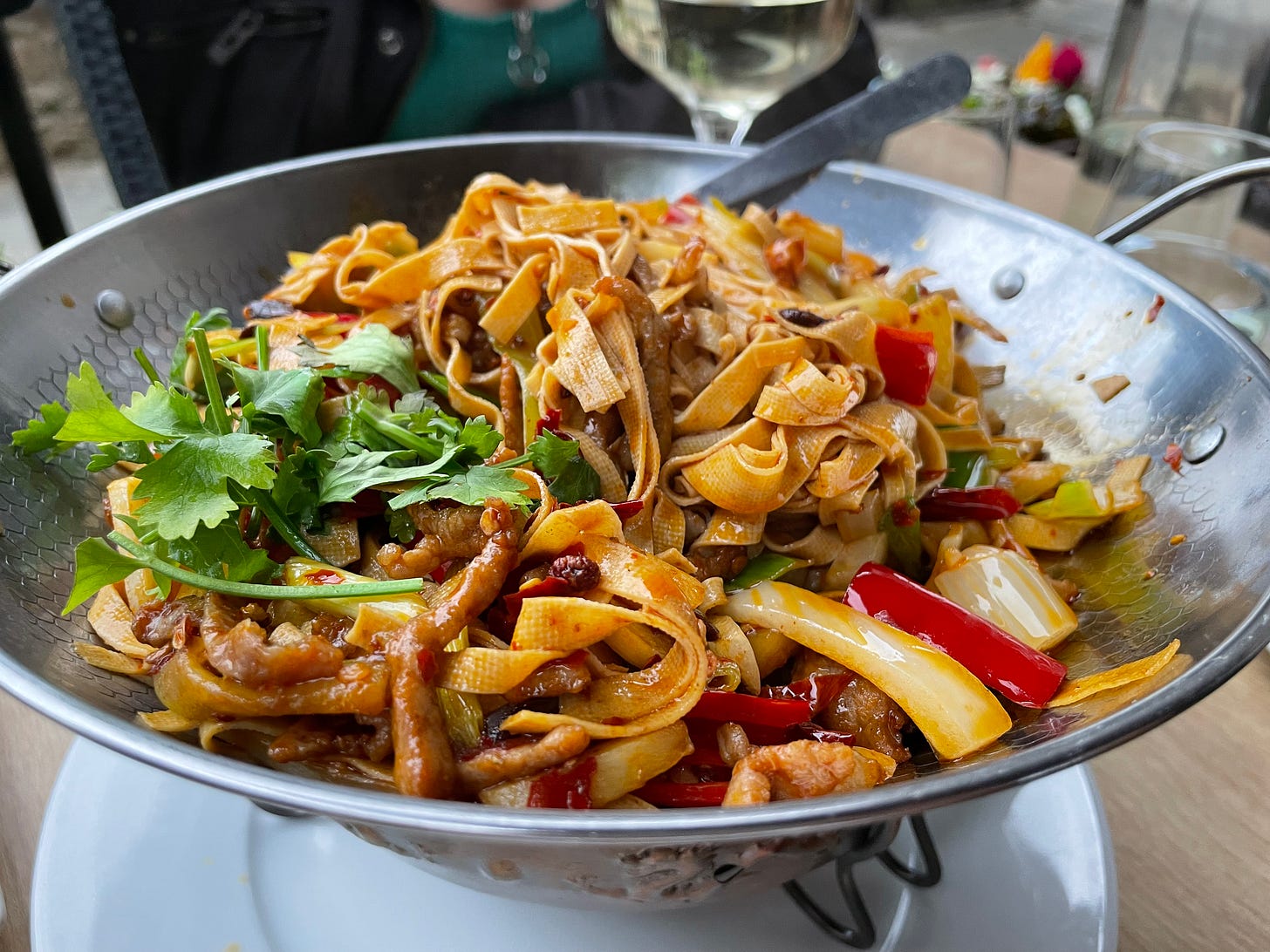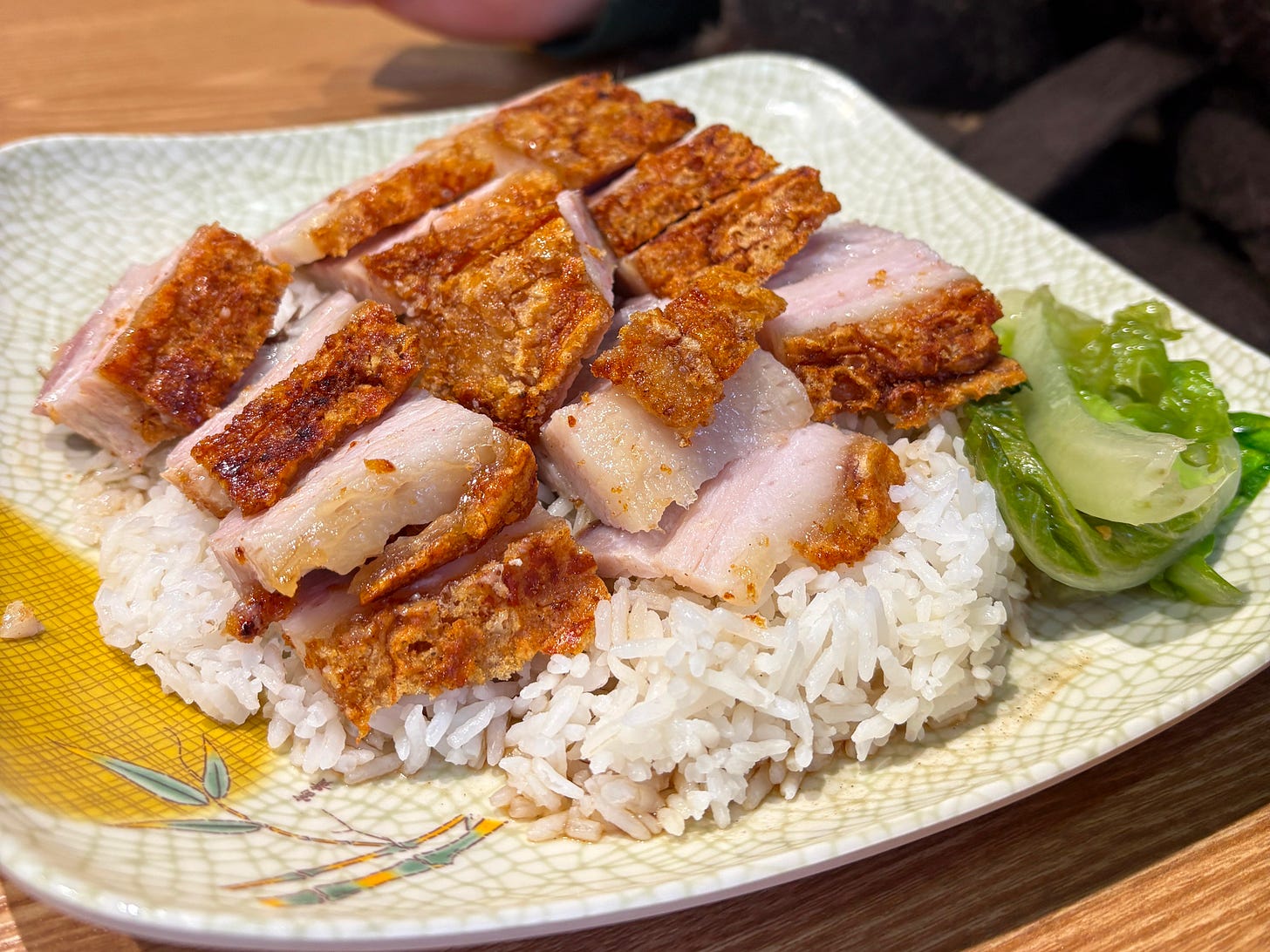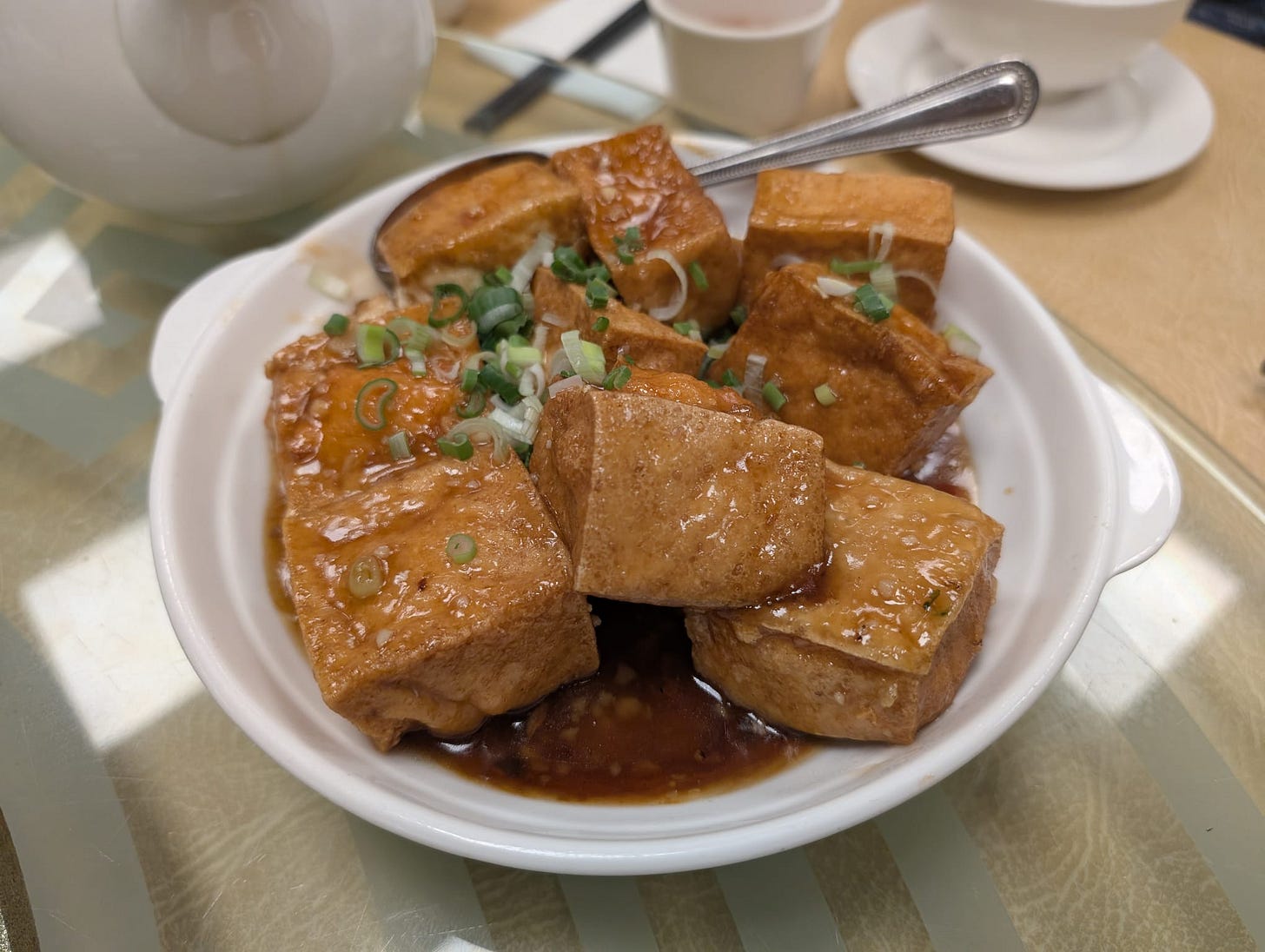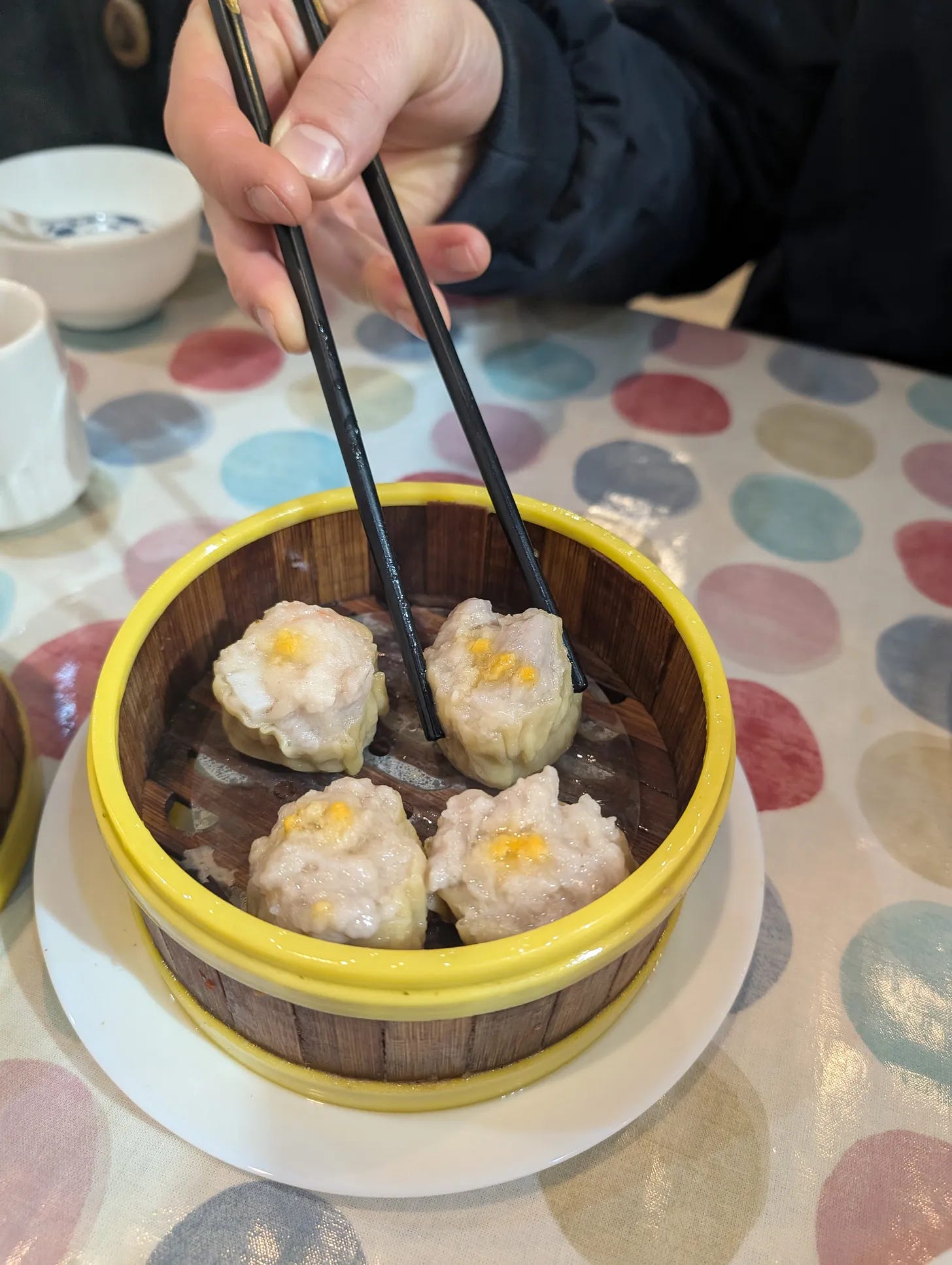British Chinese cuisine is undergoing an evolution. Two weeks ago, Restaurant Online reported that ‘Britain’s consumption of Chinese food outside the home is in decline’, referring to new data showing the weight (yes, an odd way to measure it — I know) of Chinese food that the average Brit eats outside the home has more than halved since 2007.
An article in The Telegraph last month said that ‘high rents, employee costs and changing tastes add to the problem, according to Gordon Chong of the British Chinese Society’. Plus, many second-generation Chinese immigrants do not want to run takeaways or Chinese restaurants like their parents did — meaning many have closed.
But perhaps it is that we are growing up. British Chinese food was historically homogenised and westernised as a result of Chinese immigrants moving to the UK and creating a deep-fried, sugary version of largely Cantonese food that was acceptable to the Western palate as a means of survival and creating a source of income in a country that has historically been — and in many ways still is — deeply racist. I’d highly recommend Jenny Lau’s piercing new book An A-Z of Chinese Food for further reading. Perhaps now, we’re searching for something a bit more real. Or at least some of us are - just last week I heard someone say they hadn’t found any good Chinese food in Bristol, which can only mean they’ve tried about as hard as reheating an M&S chow mein.
The decline in Anglo-Cantonese takeaway joints coincides with a rise in more regional and specialist Chinese restaurants, particularly in Bristol. It seems we have realised that China is, in fact, massive (only a little bit smaller than the whole of Europe) and therefore cannot be represented in its entirety by sweet and sour pork and a special chow mein. Grouping the incredible variety of dishes from Chengdu, Hunan, Guangzhou, et al. under the umbrella of ‘Chinese’ food is the equivalent of saying that bangers and mash and gambas pil pil should be considered part of the same cuisine.
In Bristol alone, the variety of regional Chinese food one can now explore is phenomenal and very much worthy of your attention. The growing curiosity of the Western palate, combined with the surge of Chinese students moving here to study have created the perfect conditions for a boom in regional Chinese restaurants. Here’s where we’d recommend:
Your Kitchen, Queens Road - Hunan and Sichuan
Your Kitchen divides their menu into two, so as to appease the adventurous, those who favour the familiar, and everyone in between. The ‘traditional menu’ is arguably anything but, with its chow mein and spare ribs. The other menu is where you should spend most of your time. Tofu skin, as seen below, was my favourite dish, but between the chicken feet, braised goose and spare rib dan dan noodles, there’s plenty to keep you occupied. Your Kitchen is my top recommendation in Bristol for those looking to venture beyond the classic Cantonese takeaway dishes, and it’s even got a nice garden to boot.
Tasty To Go, St Augustines Parade - Chinese home-style cooking
Tasty To Go is a haven for those looking for home-style Chinese food. Since opening their menu — along with their space — has grown. They’ve expanded into the shop next door and they now offer a whole host of menu items including duck blood soup with vermicelli, black fungus, beef brisket and more offal than you can shake an intestine at. Read the review I wrote for Bristol24/7.
Great Chongqing, Park Row - Sichuan
If you like your mouth numb and your eyes watery, this one’s for you. Great Chongqing may have toned the spice on their noodle soups down a little in recent years to account for the increasing numbers of Westerners (huge thanks to a certain influencer who sent everyone there last summer), but they can still make even the hardest of spice-connoisseurs wince. Those with tamer palates, fear not — you can request anywhere from nought to five on the spice scale.
Nice Spice, Denmark Street - Cantonese/Hong Kong roast meats
Nice Spice rivals Matina for the best lunch in Bristol. It’s no wonder there’s often a queue out the door - who could possibly resist the roast meats hanging in the window? Order your roast duck, crispy pork or roast pork (or the holy trinity) with rice or noodles and you’re set for the day. It’s cash only, excellent value (one meat with rice/noods is £11 and it’s generous) and well worth the queue.
Wangs, Picton Street - Modern interpretations of regional Chinese dishes
Wangs is one of a kind in Bristol. Head chef Emily grew up helping her parents in a classic British Chinese takeaway, but pivoted to fine dining cooking in the likes of Acorn in Bath and Tare in Wapping Wharf. She’s now combining both experiences to whip up modern takes on traditional Chinese dishes, all in the cosy setting of this pint-sized neighbourhood noodle joint in Montpelier. Go for the night market chicken, stay for the Sichuan margaritas.
Mayflower, The Horsefair - Cantonese
Perhaps Bristol’s oldest Chinese restaurant and also one of its most beloved. Having recently moved from its former home in the Bear Pit, Mayflower has now reopened in Broadmead serving classic Cantonese fare loaded up on lazy Susans. It’s rare to go to Mayflower and not see one of Bristol’s best chefs in there, which is all you need to know. Read The Bristol Sauce review.
Dragon’s Delicacy, Eastgate Oriental City - Dim sum
Of course the restaurant above Bristol’s biggest and best Chinese supermarket, Wai Yee Hong, is great. It was always going to be. This 300 cover banquet hall serves as many types of dim sum as you can imagine. Make sure to stock up on a few jars of Lao Gan Ma — crispy chilli oil — from the supermarket below before you leave.
Fresh Bakery, Fairfax Street - Dim sum
Do not be fooled by the name; Fresh Bakery is far superior to your average Greggs. Peer through steamed windows into this small, city-centre joint to see plates piled with dumplings, siu mai, turnip cake and noodles. It’s a dim sum dream. Read The Bristol Sauce review.
Hao Wei, Cheswick Village - Cantonese and home-cooking
Hao Wei is the local restaurant that caters to the large Cantonese population living in Cheswick Village, and the hungry students residing in the nearby UWE halls of residence where they deliver for free. On ‘family’ Wednesdays, they serve traditional Chinese home cooking — a variety of dishes for a (very good value) set price of £17 per person. On other days you can expect classic takeaway-style Cantonese fare done well.
Authentic Hotpot and Hand-Pulled Noodles, Redcliffe - All-you-can-eat hotpot
The only restaurant in Bristol where you can watch your noodles made by hand in front of you, before they are unceremoniously plunged directly into your hotpot. Go with friends, poke around endlessly for meatballs, prawns, tofu and vegetables that have been lost to the boiling abyss, then refill your tray with gusto and do it all again. Read the review I wrote for Bristol24/7.
Marlings, St George - Anglo-Cantonese takeaway
And finally, if you are after a classic British Chinese takeaway, look no further than Marlings in St George. It’s a firm favourite among my friends; famed for its sweet, sticky deliciousness and the fact that almost every single menu item can be made vegan — and good vegan at that — making it perhaps the most quintessential Bristol Chinese going.
So, is British Chinese food in decline? Maybe the old guard of foil trays and lemon chicken is fading, but something far more exciting is taking its place. From lazy Susans in Broadmead to spice-slicked noodles in Montpelier, Bristol’s Chinese food scene is evolving — not disappearing. These restaurants tell a richer, more regional story, one dumpling, duck leg, or tofu skin at a time. And while the idea of “authenticity” will always be slippery (and a bit loaded), what’s clear is that the appetite — for discovery, for difference — is very much alive. You just have to know where to look.
All words and photos by Meg Houghton-Gilmour
Read next:
25 Bristol restaurants to visit in 2025
You know what makes January a little less depressing? Booking restaurants. Below you’ll find enough to keep you going for the whole year, at a rate of one good restaurant every two weeks.










Weight seems like an extremely arbitrary way of assessing customer favour or popularity. Reducing portion sizes would also impact the assessment, which is often a subtle way of managing a price increase. I wonder why it developed as a metric. 🧐
Excellent piece. Thank you.